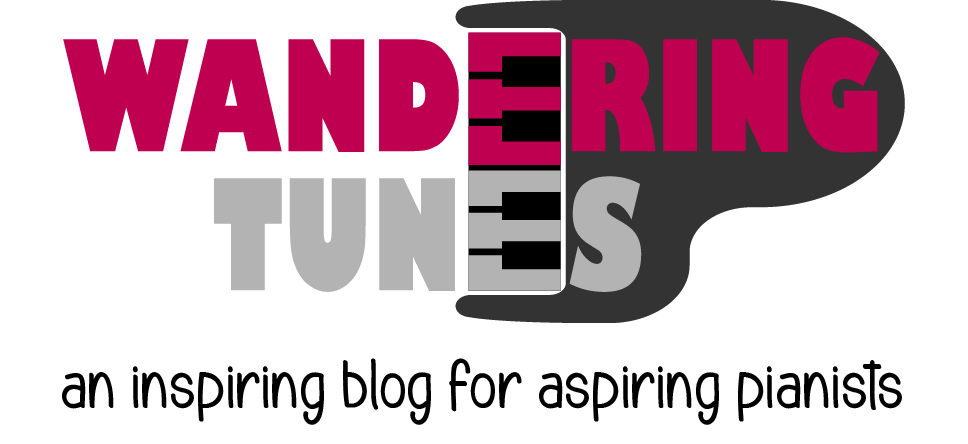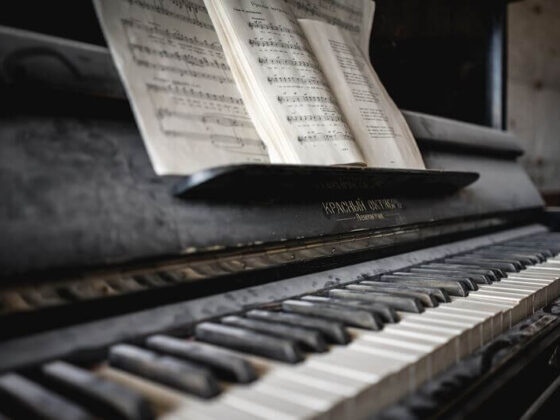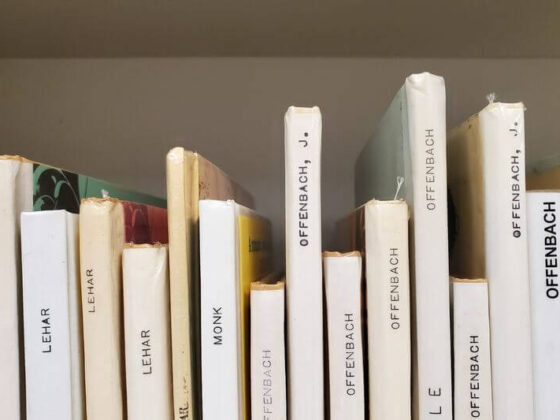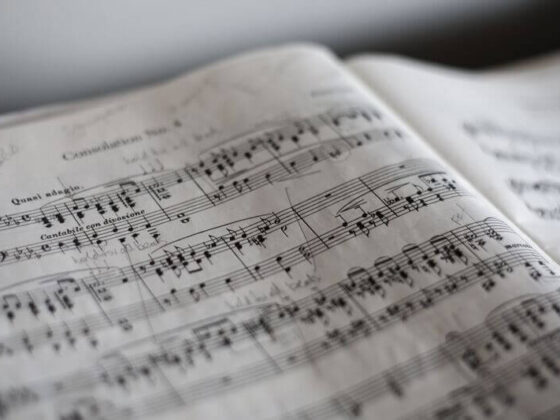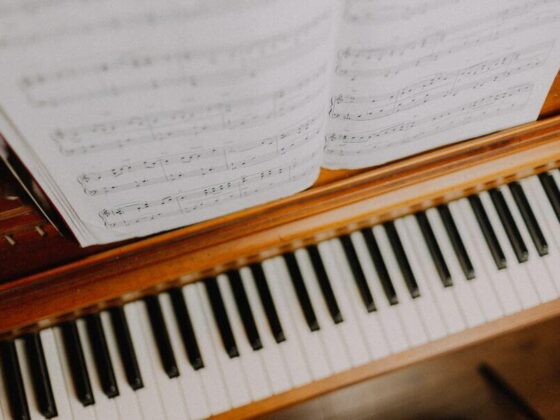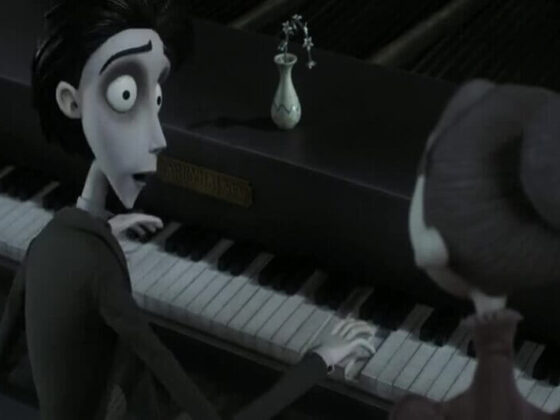Looking for the best jazz piano books for beginners or more advanced players?
As a classically trained pianist, I’ve been lately interested in teaching myself how to play jazz. Although there were several online courses I could follow, I wanted to first get a beginner jazz piano book before investing money in an online course.
A couple of hours into my online research, I’ve discovered that the books I could purchase were countless and I felt overwhelmed by the options. More importantly, I didn’t know which jazz method book would be most suitable for my level.
After trying out most if not all of the books on this list, I feel like I’ve learned a thing or two about the best jazz piano books out there for teachers and self-teaching pianists that are totally worth the money and time.
This list features the best books first for beginners, and then more advanced players. The important thing to note here is that “beginner” in this post refers not to the beginner piano players, but to players who have been playing the piano for a while but have no background in jazz piano.
After all, I don’t think any jazz piano book can help someone without at least a year of a piano learning experience. If you’re someone with no experience in piano playing or any musical instrument, I’d first recommend checking out this post where I talk about the best ways to learn piano online for free, before diving into jazz.
Best Jazz Piano Books For Beginners
Hal Leonard Jazz Piano Method Book 1 by Mark Davis
Learning jazz as a newbie can be overwhelming, especially if the resource you’re referring to is poorly structured. The most important thing beginner jazz pianists need is a well-organized and easy-to-grasp resource that will teach every jazz concept step by step, starting from the very basics. This is why this book is the perfect one to start with.
You don’t need to have any prior musical knowledge other than reading music at a basic level to understand the concepts presented in the book. Therefore, this book is an amazing resource for pianists at any level or even non-pianists. The audio tracks provided with the book are also helpful in internalizing and reinforcing what you’ve learned.
If you stick with this book, you’ll not only have a good grasp of jazz theory but also learn how to improvise. The pieces included in the book will also help you build a fundamental jazz repertoire to start soloing and jamming.
Intro to Jazz Piano by Mark Harrison
Mark Harrison has written amazing books for various piano styles that have helped thousands of people learn how to play the piano, and his jazz book is no exception. It has a step-by-step approach to teaching the fundamentals of jazz piano.
You’ll need to have basic music theory knowledge and be at least a late-beginner pianist to get the most out of this book.
With the help of its audio CD, the book will introduce you to the jazz theory, technique and teach you how to think like a jazz pianist while performing and improvising. Overall, I highly recommend this book for those who’re looking for a logical and easy-to-digest approach to learning jazz.
Jazz Exercises, Minuets, Etudes & Pieces for Piano by Oscar Peterson
This fantastic book by the jazz legend Oscar Peterson includes everything you need to establish a solid jazz piano technique. From chord exercises to jazz etudes, this book will help you strengthen your hands and develop finger independence while teaching important skills such as syncopation, which are essential to becoming a good jazz player.
The exercises and pieces in the book are relatively simple, although you still need to be learning the piano for at least one year to be able to play the exercises. It’s also great for advanced pianists to practice sight-reading.
The clear and logical explanations combined with the fun exercises and pieces in this book make jazz learning much more effective, enjoyable and inspiring.
Exploring Jazz Piano by Tim Richards
Exploring Jazz Piano is by far the most comprehensive jazz piano method book out there for beginners. It covers each concept in a thorough, structured, and step-by-step approach to ensure everything is clear and understood before moving on to the next topic.
This book teaches jazz theory in a detailed manner and then provides you with original exercises to reinforce what you’ve learned. It was one of my favorite jazz books when I first started because its emphasis was on teaching jazz improvisation while supporting it with a solid theoretical background.
The book assumes that you’re at least a late-beginner pianist who possesses basic knowledge of musical notation.
Essential Jazz Piano Exercises Every Piano Player Should Know by Jerald Simon
This supplementary book is great to have in your library either while teaching your students jazz or self-teaching. What makes this book unique is its focus on the practical and concrete side of jazz.
After presenting the general theory concepts, it provides you with essential exercises and original fun pieces to apply the theory and develop a creative improvising style.
This book is best suited for intermediate to advanced pianists who are new to jazz piano.
Best Intermediate Jazz Piano Books
The Jazz Piano Book by Mark Levine
This book is arguably the bible of jazz piano. It covers everything you need and will come across while playing the jazz piano. However, before buying this book and wasting your valuable time for months with frustration and no progress like most people, hear me out.
First of all, it’s not a method book in the sense that it doesn’t include any practical exercises and step-by-step modules to teach you the concepts in an easily digestible way. Rather, it’s theory-heavy and delivers information for pages, leaving implementing and applying what you’ve learned completely to you. This means even if you’re an advanced classical or pop/rock pianist with no background in jazz, this book will still be tough for you.
So, who is this book exactly for then?
For pianists who are already at least at an intermediate level in jazz piano. It’s a must-have resource book for serious jazz pianists. The book covers several complex theoretical knowledge and jazz concepts that are essential to becoming a well-versed jazz pianist.
Playing Solo Jazz Piano: A New Approach for Creative Pianists by Jeremy Siskind
I’ve only recently discovered this book, and I’m blown away by the quality of the exercises in it and Jeremy Siskind’s inspiring and easy-to-understand teaching style.
The book covers several solo jazz piano styles and topics such as stride, swing, various techniques, and modern jazz piano approaches to become a versatile and creative jazz piano player. I recommend getting this book if you’ve been learning jazz piano for at least a year and would like to open up your mind to a more creative and innovative approach to playing jazz with unique methods, exercises, and learning tips.
An Approach To Comping: The Essentials by Jeb Patton
This book by the respected NY pianist Jeb Petton is arguably the most comprehensive guide to comping for jazz pianists.
Comping, or accompanying a solo line/soloist, is an essential skill you need to master if you’re serious about becoming a good jazz musician. Most jazz piano books cover this topic alongside hundreds of others, therefore it’s often not given enough attention.
This book has clear explanations, utilizes a structured approach, and is filled with high-quality materials. I believe this book is a must-have for intermediate and advanced jazz pianists who’d like to take their comping skills to the next level.
Jazz Keyboard Harmony: A Practical Voicing Method for All Musicians by Phil DeGreg
This book is indispensable for not only jazz pianists but also any musician who’d like to explore and dive deeper into jazz piano voicings.
The book has a structured and progressive approach in which every new concept is built on top of the previous one. This way, there are no gaps between the topics, therefore you never feel lost. In addition, the play-along CD in the book makes it a perfect one for self-teaching musicians.
Overall, it’s an incredibly helpful book to learn one of the core concepts in jazz piano, the voicings, and eventually to expand your vocabulary of jazz harmony.
